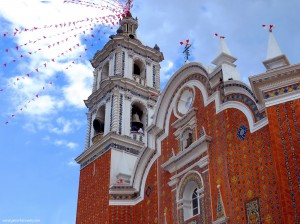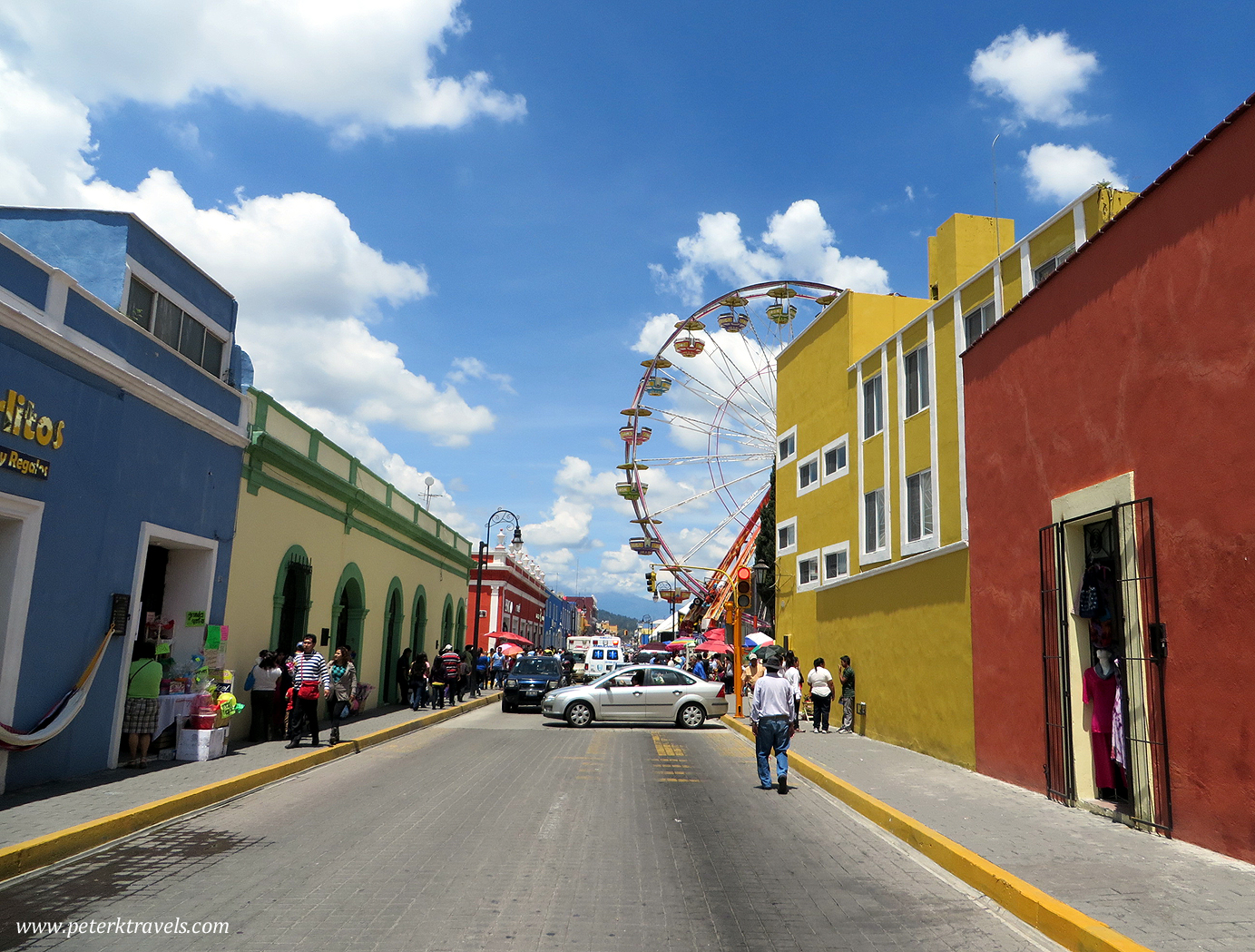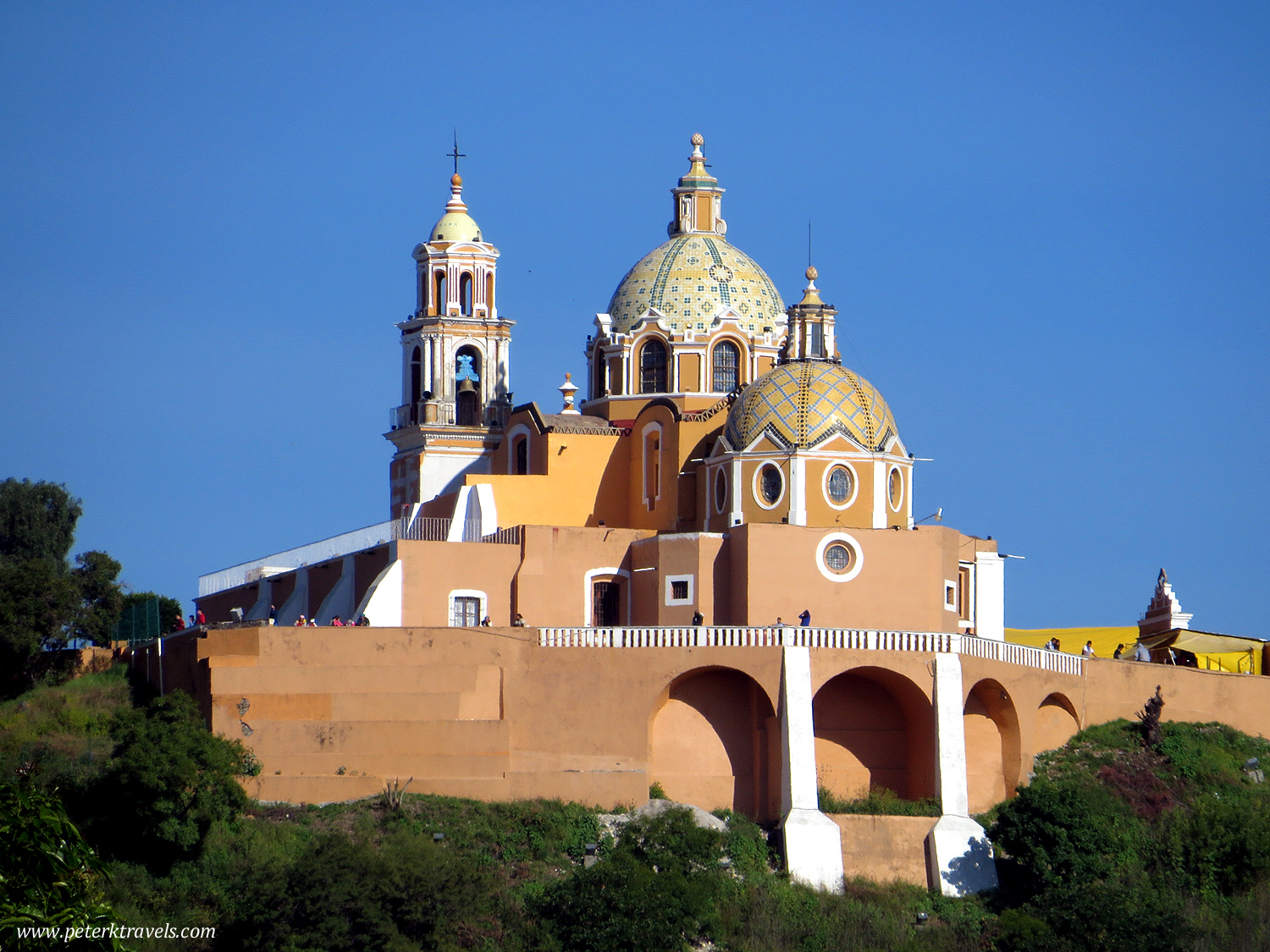Three Beautiful Churches Near Cholula
The church of Santa María Tonantzintla is located just a few miles south of Cholula. During my September 2013 trip to the area, I had planned a day trip to Cholula, and wanted to see several churches south of town. My plan was to catch a cab to the first one, Santa María Tonantzintla, and then see where things took me. After flagging down a cab and talking for a few minutes, I decided to pay the driver to take me to all three churches, and then back to Puebla. This would prevent me from having to backtrack.
Santa María Tonantzintla was constructed in the 17th century as a church for the local indigenous people. As was typical in Mexico, the local people incorporated many of their own beliefs into their religious symbols. This fusion produces a style which some refer to as “indigenous baroque”.
The church has a yellow body, but is nicely set off with red tile. The front ornamentation is rather simple, with figures of St. Peter, St. Paul, and the Virgin Mary enclosed in niches along the front. The overall look is very pleasant.
It’s the inside where things get more interesting. A riot of figures cover every surface. The impact is stunning, your eyes are drawn over and over the surfaces, examining the many details. You can see children, birds, angels, flowers, and many other symbols. All are painstakingly crafted from plaster, then carefully painted or gilded.
Unfortunately, it is not allowed to photograph inside the church. Photos are sold outside, and proceeds are used to support the church. I witnessed a Mexican woman hiding a video camera inside a plastic bag, and surreptitiously taking video of the interior. I decided to respect their wishes, and purchased a few photos outside. I did zoom into the interior from the outside, though the photos don’t look like much.
Located about a mile from Santa María Tonantzintla, San Francisco Acatepec is another church that displays a fusion of Catholicism with indigenous beliefs. The exterior facade is completely covered in Talavera tile, and the effect is stunning. Mexican art historian Don Manuel Toussaint calls it a “porcelain temple.” It was begun in the 1650s, and finished around 1750.
The Talavera tile is a local product, traditionally created in nearby Puebla. In addition to the tile, there are also religious symbols such as the lamb incorporated into the facade.Unfortunately, in December of 1939 a fire destroyed its original interior. It was recreated in 1941, based on photos and drawings of the original. It is quite beautiful.
I liked this church so much I wrote an entire entry just about it. Please click here to see more photos of San Francisco Acatepec.
Further down the road, we come to San Bernardino Tlaxcalancingo. The day I visited happend to be a festival day, and a large tent was erected in front of the church. Ear splitting fireworks were being launched while I manuvered through the crowds. The church dates from the late 1700s and this church has a facade covered with brick and talavera tile in blue, white, yellow, and green. The tower has baroque styling, and there were children up there despite the bells ringing! They must be deaf!
A quick peak inside shows more gilded surfaces, as well as beatiful paint and plaster details. Because of the festival, I didn’t hang around long. Still, it was worth seeing. After leaving San Bernardino Tlaxcalancingo, my taxi driver took me back to Puebla. This was a nice way to see all three churches, though perhaps I would have wanted more time. A few more photos are below, please click any of them to see larger versions.



















